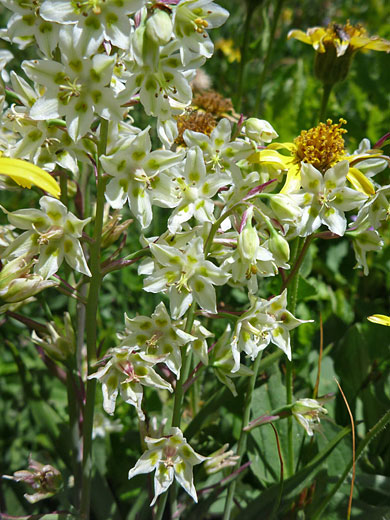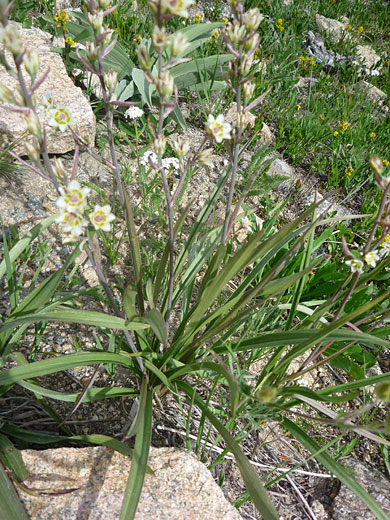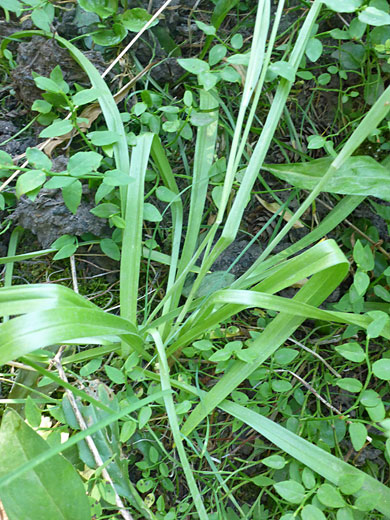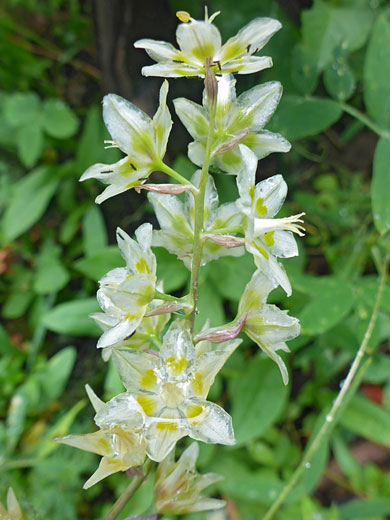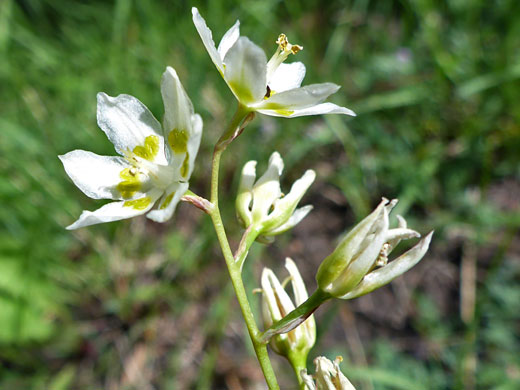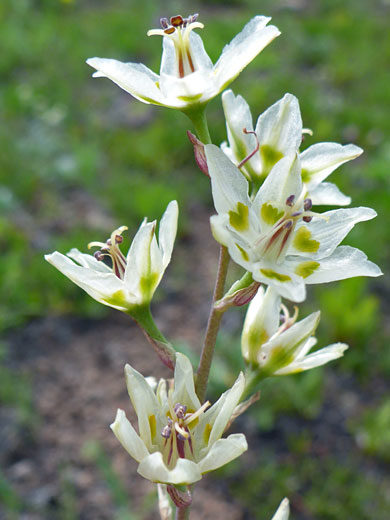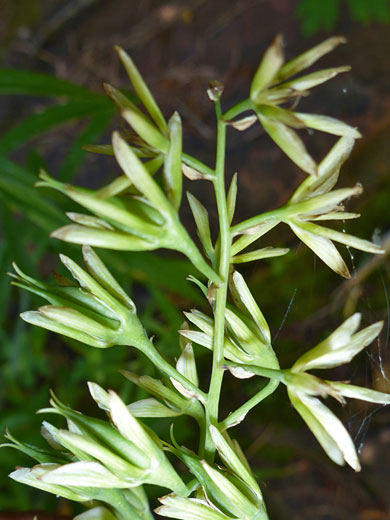Common names:
Elegant death camas, alkali grass, mountain death-camas
Family:
Scientific name:
Anticlea elegans
Synonym:
Zigadenus elegans
Main flower color:
Range:
All the western states except California
Height:
Between 6 and 30 inches
Habitat:
Mountainous regions; forests, hillsides, meadows, canyons
Leaves:
Linear, grass-like, up to 12 inches long, predominantly basal. Keeled, and sometimes reddish
Season:
June to August
The common name of anticlea elegans (elegant, or mountain death camas) refers to its toxicity; the plant is highly poisonous, and has resulted in the deaths of many early settlers to the mountainous regions of the West, in part due to the similarities to certain edible species like onions and camas. It is also a noted killer of livestock.
Flowers grow in little groups along the upper portion of the lightly branched stems, which like the long, thin leaves, are green in color with purplish tints. Individual blooms are around 3/4 of an inch in diameter, white or yellowish-white in color, and formed of six tepals (three petals and three sepals, identical in appearance), each with a green, heart-shaped gland at the base. Stems are mostly leafless. Stamens are white at the base, green at the tip, bearing brown to reddish anthers that become yellow when mature. Each bud is subtended by a narrow, reddish bract, which withers at flowering time.
Flowers grow in little groups along the upper portion of the lightly branched stems, which like the long, thin leaves, are green in color with purplish tints. Individual blooms are around 3/4 of an inch in diameter, white or yellowish-white in color, and formed of six tepals (three petals and three sepals, identical in appearance), each with a green, heart-shaped gland at the base. Stems are mostly leafless. Stamens are white at the base, green at the tip, bearing brown to reddish anthers that become yellow when mature. Each bud is subtended by a narrow, reddish bract, which withers at flowering time.
All Contents © Copyright The American Southwest | Comments and Questions | Contribute | Site Map





